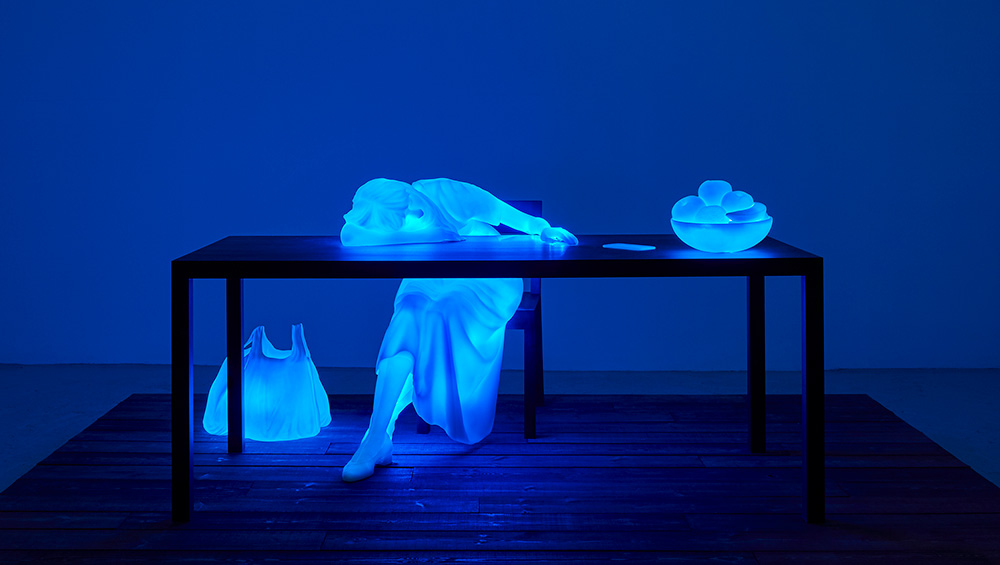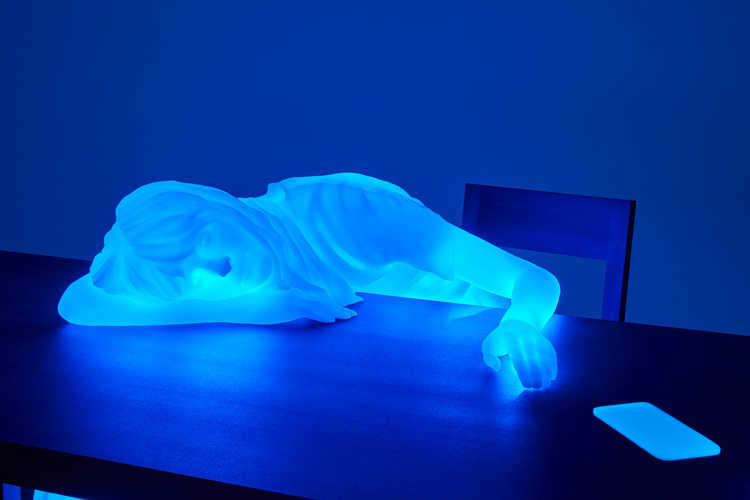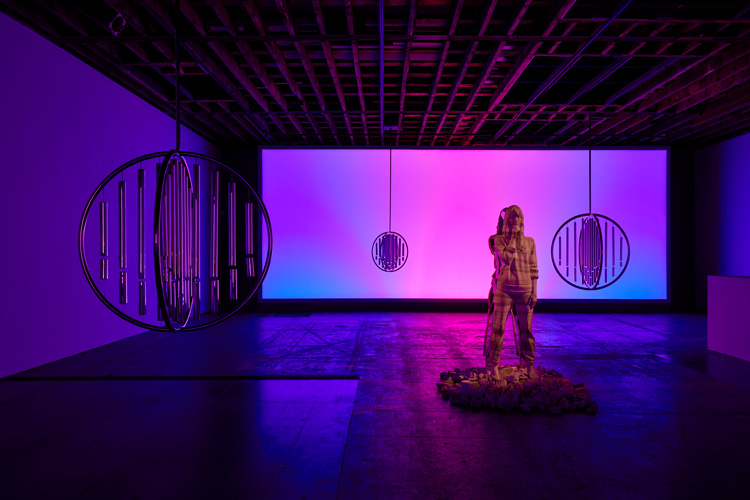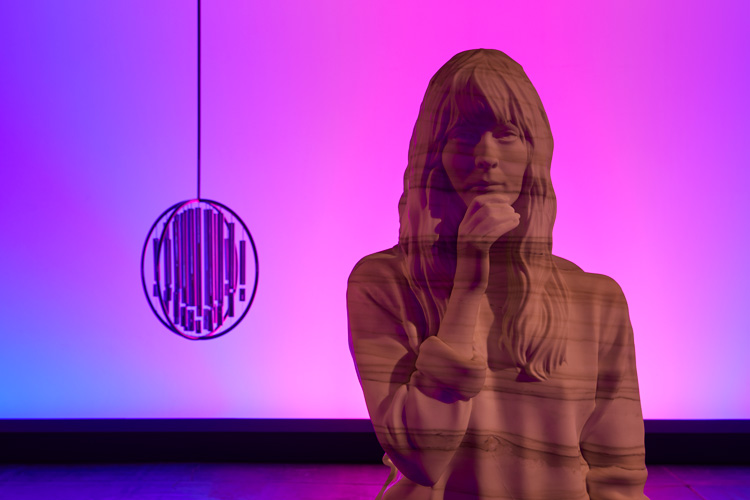
Doug Aitken. All doors open, 2019. © Doug Aitken. Courtesy 303 Gallery, New York; Galerie Eva Presenhuber, Zürich; Victoria Miro, London/Venice; and Regen Projects, Los Angeles.
Victoria Miro Gallery I, Wharf Road, London
2 October – 20 December 2019
by KRISTINA FOSTER
Only the adventurous usually get to see the work of American artist Doug Aitken. Intrepid art lovers have previously had to cross deserts, traverse the Swiss Alps, or even take the plunge to Davy Jones’ locker to see his ambitious site-specific installations. Occasionally, however, the artist returns to the traditional gallery space with works that are no less experimental or mesmerising.
In some ways, it is all the more impressive to see what this agile multidisciplinarian can do within the constraints of walls. His new exhibition, Return to the Real, takes over Victoria Miro’s bijou location on Regent’s Canal in north London, filling two small floors with a humming, interconnected series of works conceived to explore our place in a world governed by technology.

Doug Aitken. All doors open, 2019 (detail). Acrylic, LED, wood 94.6 x 304.8 x 213.4 cm (37 1/4 x 120 x 84 in). © Doug Aitken. Courtesy 303 Gallery, New York; Galerie Eva Presenhuber, Zürich; Victoria Miro, London/Venice; and Regen Projects, Los Angeles.
Whether Aitken presents us as slaves to technology, or beneficiaries of it, is ambiguous, an ambivalence suggested by works that are at once unsettling and eerily beautiful. In the middle of the ground floor is the figure of a woman, made of translucent acrylic, slumped over a table, emanating a spectral glow. The smartphone lying just out of reach suggests she has been spent by a recent bout of digital deluge to the point of being moribund. A nearby fruit bowl and plastic bag are familiar domestic touchpoints recalling the ordinariness of life that encourages us to pursue escapism through virtual means.
_2019-a.jpg)
Doug Aitken. Futures Past (aerial pools), 2019. Chromogenic transparency on acrylic in aluminium lightbox with LEDs, 172.1 x 316.2 x 18.1 cm (67 3/4 x 124 1/2 x 7 1/8 in). © Doug Aitken. Courtesy 303 Gallery, New York; Galerie Eva Presenhuber, Zürich; Victoria Miro, London/Venice; and Regen Projects, Los Angeles.
The message here seems clear enough: technology has dangerously blurred the boundaries between waking and dreaming states. LED panels on the walls depict images of pools and planes that could be surreal fragments of dreamscapes, but could just as easily represent the surfeit of holiday spam that we might see on Instagram. Welcoming images of beds also reference the act of sleeping, but also the hours of sleep that we forfeit in our constantly connected world.

Doug Aitken. Inside Out, 2019. Installation view from Return to the Real at Victoria Miro, Wharf Road, London, 2019. © Doug Aitken, courtesy Victoria Miro.
Our oneiric experience continues upstairs, where we meet another female figure, although, this time, she stands, legs astride and self-possessed. Just like the woman below, this strange effigy warrants closer inspection; she is carved out of Zebrino marble and bisected to reveal an inner chamber covered in mirrors that is animated by the surrounding ballet of light, sound and movement. Circular sculptures spin around her, generating a mellifluous musical accompaniment to a recording of siren-like voices. This music of the spheres creates an almost cathedral-like setting – is Aitken here asking us to worship at the altar of technology? He certainly seems to have gone to great lengths to create a hypnotic digital landscape to which we feel compelled to surrender our senses.

Doug Aitken. Inside Out, 2019. Installation view from Return to the Real at Victoria Miro, Wharf Road, London, 2019. © Doug Aitken, courtesy Victoria Miro.
An artist known for his affinity for natural surroundings, it is no surprise that Aitken is unable to resist spilling out into the gallery garden with a graceful sculpture, akin to the wind chimes within, standing watch over the moss-covered water. This minimalist piece is the only part of the exhibition that does not seem to sync up, but it is not an unwelcome moment of calm after the theatricalities indoors.
Whether it is glass, mirrors or screens, Aitken is an artist who is fascinated by the idea of surfaces and their captivating qualities, so the theme of digital exhaustion seems natural territory for him. Overall, the exhibition is a seamless blend of his favourite mediums, precisely arranged to address an increasing problem in society. Many artists are using their practice to address the all-consuming effects of our always-on lifestyles. Indeed, a forthcoming exhibition at Somerset House in London, titled 24/7, is dedicated entirely to exploring how technology is creating an increasing detachment from our surroundings in favour of an ersatz reality lived online. But who is to say whether one experience is better than the other? Aitken’s spellbinding installations begs this question, beckoning us to return to the real while at the same time celebrating the irresistible pull of the blue light.